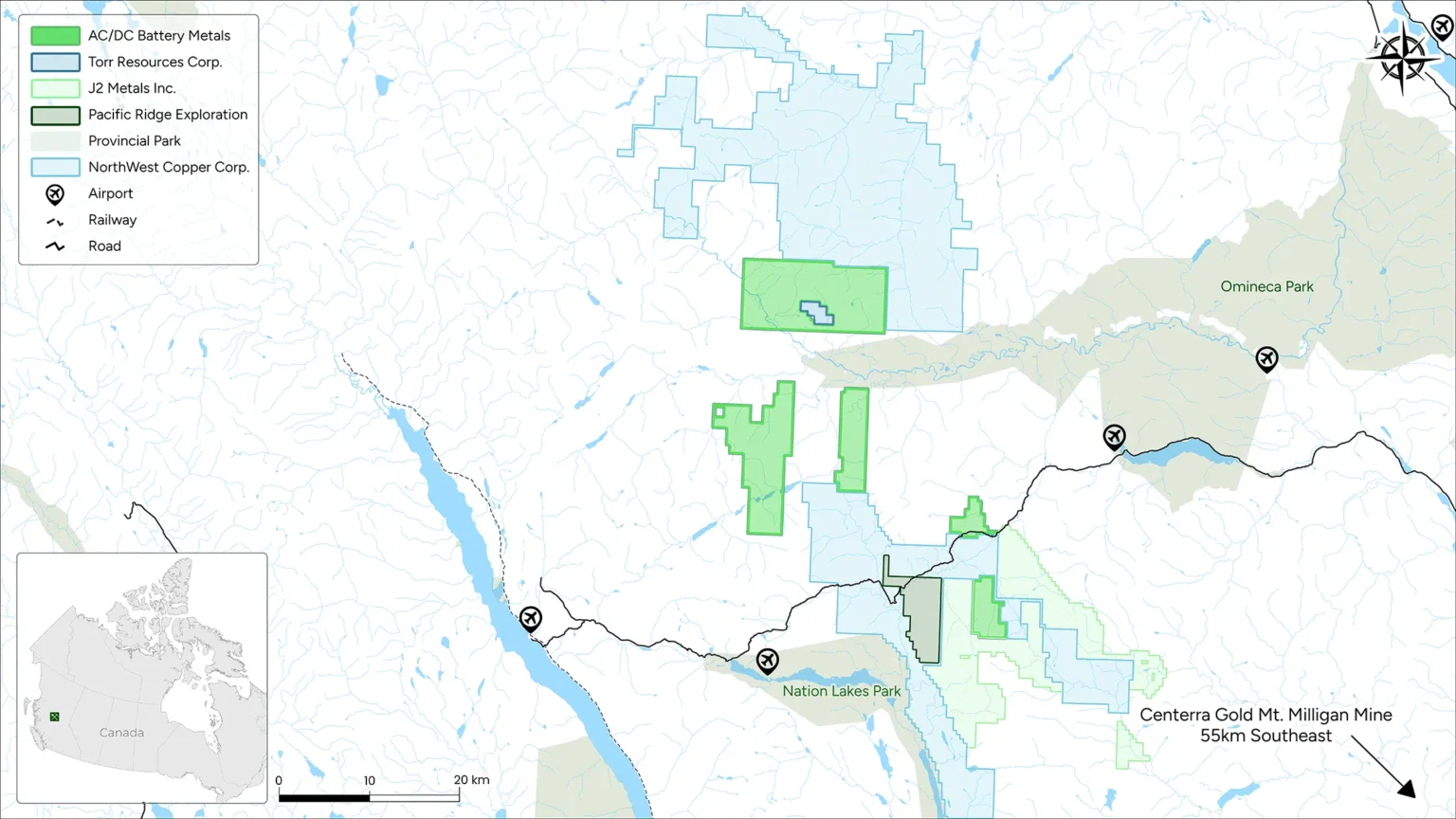ACDC Copper Project
Our unwavering focus is on exploring and advancing premium-grade battery metals deposits that will drive the transition towards a sustainable future. In our portfolio lies the ACDC Copper Project, which holds a pivotal role, as Copper forms a critical element in the creation of electric vehicle batteries and energy storage systems.
Overview of the ACDC Copper Project
The ACDC Copper Project consists of 17 claims comprising of 27,525.24 hectares in the Omineca Mining Division of north-central British Colombia, approximately 150km north of Ft. St. James. The claims are not subject to any royalty terms, back-in rights, payments or any other agreements and encumbrances.
The property is road and helicopter accessible from Ft. St. James via a network of province-maintained paved roads and forestry-maintained gravel roads. The Canadian National Railway company owns an inactive railway line that passes a short distance from the property.
Location
Total Area
(68,015 acres)
Claims
Royalties
Interest
History
B.C. Minfile assessment report data indicates that most of the area covered by the Copper Property was at one time or another covered by staking during surges of exploration in B.C. dating from the 1940’s to present day. Largely the claims appear to have been minimally explored with little follow-up. However, some work was recorded on several claims with results for stream sediment sampling showing anomalous to highly anomalous results for gold in a few areas. These areas were recommended for detailed follow-up, however due to a downturn no further work was recorded.
Potential
This strategic positioning within the Intermontane Belt suggests high potential for discovering valuable mineral deposits, including copper and gold, particularly near prominent NW-trending structures and historical occurrences such as the Lustdust and Axelgold properties.
Geology
The Omineca Group claim areas are within the northern Quesnel Trough underlain by Cache Creek Terrane and lies close to the Pinchi Fault. The Quesnel Trough hosts numerous porphyry copper-gold deposits. The Pinchi Fault can be traced for 600 km through north-central B.C and separates Cache Creek rocks from the Jurassic Hogem Batholith and Triassic-Jurassic Takla rocks to the west. Rocks have a north-northwest strike trend typical of the entire Intermontane Belt in which the Cache Creek Terrane lies (Gabrielse and Yorath, 1992). A wide range of Jurassic to Tertiary intrusions cuts the Cache Creek Assemblage and many of these are emplaced along the prominent NW-trending structures and stratigraphic breaks. Numerous mercury occurrences are present along the length of the Pinchi fault (Albino, 1987) and a few gold and base metal occurrences are present near the Pinchi fault including the Lustdust, Lorraine, Indata and Axelgold properties. There are at least two alkalic gold-copper Porphyry systems in the immediate Lustdust (now known as Stardust) area: J49 and Axel Properties (Schiarrizza, 2000).


